New Thinkers, Old Stereotypes
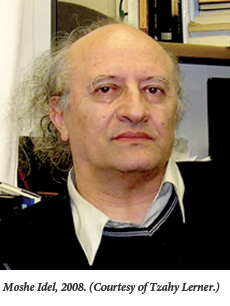
The old divisions among European Jews have mostly faded. Eastern European Jews (Ostjuden) and Western European Jews (Westjuden)—and more particularly their descendants—are all just Ashkenazim now. Nobody derides Ostjuden as uncivilized half-Asians or Westjuden as self-deluded slaves to Gentile culture anymore. And both the shtetl and the Jewish intellectuals of Weimar have been celebrated countless times. But, it turns out, the old grudges, cultural and personal, are still with us. In the essays collected in Old Worlds, New Mirrors: On Jewish Mysticism and Twentieth-Century Thought, Moshe Idel, the eminent Hebrew University scholar of Jewish mysticism, angrily criticizes members of what he calls the “new elite” of 20th-century Central European Jewish intellectuals—including his great predecessor at Hebrew University, the Berlin-born Gershom Scholem—as cultural “desolates,” melancholic prophets of negativity.
Old Worlds, New Mirrors is, intermittently, a brilliant and often illuminating exposition and critique of the role that Jewish mysticism has played in much of 20th-century Western thought. Idel uncovers the many ways in which external sources, rather than traditional texts and practices, have informed accounts of Jewish mysticism. He shows, for instance, how important the idiosyncratic 19th-century German Catholic kabbalist Franz Josef Molitor was for Scholem’s account of the putatively kabbalistic understanding of revelation as “the absolutely unfulfillable.” When Idel sticks strictly to such tasks there is no greater master. The problem, however, is that Old Worlds, New Mirrors is far too often a strident, ideologically driven polemic with a recurrent didactic thesis.
Idel describes himself as having been shaped by his “experience of a deeply traditional Eastern European Jewish environment . . . in northern Romania . . . in one of the few shtetls that survived the Holocaust without major harm.” So there is, apparently, an autobiographical dimension to his reformulation of the old dichotomy between modern, atomized Westjuden and traditional, communally nurtured Ostjuden. While Ostjuden remained loyal to the tradition and its language and stayed closer to the inner intent and meaning of Judaic sources, Westjuden assimilated to majority cultures, jettisoned the tradition, and abandoned Hebrew for European languages. These changes gave writers and thinkers from Sigmund Freud, Franz Kafka, Scholem, and Walter Benjamin, through Paul Celan and George Steiner what Idel calls their “Saturnine proclivity” for philosophies of absence, theologies of deferment, and narratives of rupture.
Of course, Idel is too refined a scholar to attribute these differences to pre-existent archetypes or essences. Instead, he posits a phenomenology of cultural horizons. Having absorbed the shock of modernity and bereft of the experience of a vital, living community, the Central European Jewish intelligentsia elaborated “abstractions, universal missions, negativities, and religious paradoxes” that “recreated Judaism in their own image, just as the shtetl Jews did, though in the latter case less self-consciously.” Although Idel insists that “neither of these imaginaires projected onto earlier forms of Judaism is more authentic or more representative,” one is not quite sure that he means it. For all his proclaimed methodological pluralism and insistence on impartial phenomenology, Idel’s language betrays his obvious preference for the putative richness of the East European experience. Thus, he writes of the two cultures:
We might characterize the two cultural horizons as arising, respectively, from an emphasis on what was conceived to be ‘a life lived in deferment’ as constitutive of life in exile according to the Central European perspective, and from a belief in and search for the possibility of attaining experiences of plenitude, a perspective that is characteristic of traditional texts.
If melancholy characterizes the new Central European Jewish elite, exaltation is to be found in the East:
But although desolation, tragedy, silence, blankness, and abstract transcendence may have constituted a coherent experience among the desolates in Vienna and Prague, their contemporaries in numerous Hasidic circles in other parts of the former Hapsburg empire adopted other concepts and beliefs, including those of vital language, joy, and perceptions of immediate presence and intimate immanence.
Perhaps Idel is reacting to the contemporary celebration of the Central European Jewish intellectual legacy. He does sporadically register his great admiration for these modernist figures, “their extraordinary genius” and “the richness and complexity of their work.” At one point he even pronounces them “the most astonishing galaxy of Jewish intellectuals ever produced in one generation.” However, he notes that in becoming so, they deserted the search for religious truth and adopted the canons of critical post-Enlightenment secular scholarship. He correctly, if somewhat acidly, goes on to note “that acculturation to the majority—mostly Central and Western European—cultures,” assimilating standards and methods foreign to Jewish tradition, was a precondition of both their scholarship and their present iconic status. Idel’s patronizing disapproval is puzzling, given that one could say the same of his own phenomenological methods and deserved fame.
Engagement in critical inquiry is what modern intellectuals do. They are not, with minor exceptions, rabbis or communal leaders. Moreover, it was precisely the complex intertwining of “Jewishness” with European culture that produced this “astonishing galaxy” and marked its creativity as well as its quandaries. Finger-wagging in tone, Idel tends to indulge in ahistorical admonition. Rather than contextual analysis, he tells a didactic tale of assimilated Jews going astray.
What, for instance, are we to make of his treatment of Paul Celan? Idel upbraids him for choosing “to write chiefly in German, the language of his mother and her killers.” He writes:
The content of Celan’s German poetry, unlike his less well-known efforts in Romanian, reflects his obsession with negativity, to a great extent the result of his deliberate adoption of the German language as the exclusive medium for his poetic activity in his mature years. Celan’s transformation from a Bucovinan Jew and a Bohemian into what I have called a ‘desolate’ in the West reflects, in my opinion, not only the deep impact of the Holocaust but also his inability to develop a strong connection to a specific community.
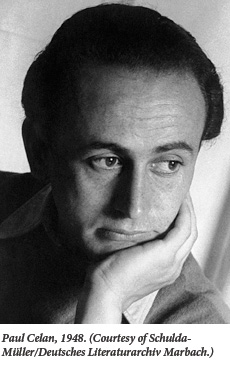
But Celan’s confrontation with, and refashioning of, the German language—with an admixture of Hebraic references and Judaic themes—was absolutely essential to his project of confronting the Shoah. Its pungency, ironies, and wordplay derive precisely from the fact that it is forged in the language of the murderers. When asked how he could still write in German after all the horrors, he replied: “Only in the mother tongue can one speak one’s own truth. In a foreign tongue the poet lies.” In the face of the great historical catastrophe that his poetry sought to engage, Idel’s designation of Celan as a “desolate” obsessed with “negativity” is strange, even bizarre. Would the lyrical terms of plenitude, immediacy, and joy have been a better substitute? One rather doubts that the Romanian language would have provided the “community” that Celan lacked or that it possessed the same pertinence required for the modernist poetic project that he so magnificently succeeded in formulating in, and against, his native German tongue.
But, of course, Celan, like many others of the Central European Jewish elite, was self-consciously modernist. This has much to do with Idel’s characterization of his figures as desolates and melancholics. To the extent that there was such a “saturnine proclivity,” it was a property of modernists in general. Need one mention the desolation of T. S. Eliot’s Wasteland? The greatest portraitists of “negativity” and the modern loss of access to transcendence were, arguably, Nietzsche and Samuel Beckett, neither of whom, it is needless to point out, were Central European Jewish intellectuals. As Saul Bellow, who was of impeccably Eastern European Jewish provenance, once put it:
All of us living in the West must endure this desolation. The feelings it transmits, the motives it instills in us . . . the coloration they give to our personalities, the mutilations they inflict on us . . . do not spare anybody . . . Jews, as such, are not exempt from these ruling forces of desolation . . . Closely observed, the Orthodox too are seen to be bruised by these ambiguities and the violence that our age releases impartially against us all.
Idel does not tell us that many Eastern European Hebrew and Yiddish authors similarly adopted a variation of critical modernism to write about their own societies. Among them were Mendele Mocher Sforim (Shalom Abramovich), Micah Joseph Berdichevsky, and Uri Nissan Gnessin. Nor was it just novelists who wrote in that mode. Vladimir Jabotinsky described the Eastern European “ghetto” as “truncated, mutilated, semi-life” and in 1895, after his sojourn in Berlin, Chaim Weizmann observed “the vile, repulsive” impression that everyday existence in Pinsk left on him: “There is nothing here and no-one; instead of a town—just an enormous rubbish-heap; instead of people, one comes across creatures devoid of all personality, with no interests, no desires, no demands . . . Hundreds of Jews push on and hurry about the streets of our town, with anxious faces marked by great suffering, but they seem to do it unconsciously, as if they were in a daze.” Little of the plenitude, immediacy, and joy is discernible here.
But even if we grant that all modernisms possess a measure of sadness, many of Idel’s supposed Central European “desolates,” such as Martin Buber and Franz Rosenzweig, do not really fit the bill. Buber’s early Zionist writings forcefully advocate for a re-entry into a revivified ur-Jewish community of plenitude, and his later dialogical I-Thou philosophy was founded upon a positive and immediate God-man relationship. As for Franz Rosenzweig, while he indeed accepted “exile” and “meta-history” as part of the Jewish condition, he conceived of the God-man relation as direct and redemption for the Jews as an immanent possibility.
Commenting upon intellectuals who fled the Nazi threat, Idel, shockingly, indeed incomprehensibly, writes: “The only one to postpone departure until it was too late was the only one who believed that a complementary coexistence of Jewish and Christian culture was possible: Franz Rosenzweig.” Too late? Rosenzweig died of a deeply debilitating disease in 1929, more than three years before Hitler’s accession to power! At that time, few, if any, were aware that the Nazis constituted any kind of credible threat. Moreover, there were many at that time who still felt that some form of Christian-Jewish dialogue, however faint, was still a possibility.
But what about the great Gershom Scholem, who is clearly Idel’s bête noire and whose presence is everywhere in this book? Idel’s Scholem is definitively a “desolate” given his musings on the “nothingness” and “unfulfillability” of revelation, as well as his insistence that for kabbalists access to the transcendent was conceivable only through mediated, symbolic means. Scholem’s magisterial work on Shabbtai Zevi is described as—and virtually reduced to—a study of melancholy. An unpublished poem by Scholem becomes emblematic of this “saturnine proclivity”: “Where there once stood God, there is now Melancholy.” These Scholemian perspectives, Idel suggests, may be fascinating, but they are based upon exilic Kafkaesque ruminations and Christian sensibilities (derived especially from Johannes Reuchlin and Franz Molitor) alien to the kabbalistic sources and traditional Jewish practices.
I do not want to be misunderstood: There is much in Idel’s critical exposition of Scholem that is both perceptive and uniquely learned. He observes, interestingly, that while the young Scholem sought the ontological reality of the mystic message “beyond history,” given the horrors of World War II, he came to regard the kabbalistic categories of creation, exile, and tzimtzum (divine self-contraction) as unconscious symbols of galut (exile), codings of the catastrophes and hopes of an unredeemed exilic Jewish history. There is little evidence for this interpretation, Idel argues, adding, “the symbolic reading is probably the worst way of reading history.”
He also convincingly criticizes Scholem’s many assertions that the mystics could only mediate their experience of the divine through symbolism. “In the writings of the kabbalists themselves,” Idel proclaims, “I never found one description of Kabbalah as straightforwardly symbolic.” Scholem’s descriptions, he controversially argues, impose non-Jewish notions of secrecy, ineffability, and inexpressibility onto the kabbalistic sources. In addition, he shows that Scholem marginalized the ritual dimensions of popular Jewish life, while in his anarchic radicalism he neglected the spirituality of conservative forces easily discernible in kabbalistic texts. Indeed, he argues, in doing so Scholem misses the potential non-conformism within these very texts.
There is, no doubt, much validity in all of this. Yet the determined, driven partiality of his presentation, a constant chipping away, leaves one uncomfortable. Why, one wonders, does Idel tell us that this great scholar “never wrote about books or manuscripts that he had not read”? Has anyone ever doubted Scholem on this score? Ultimately, we are left with a virtually unrecognizable picture of the man and his project. Were one to rely only upon Idel’s analysis, one would be left with the impression that Scholem was little more than an depressive, assimilated Central European Jewish thinker, prey to any number of Christian influences and non-Jewish cultural sources. We would have no knowledge of his fiery commitment to the cause of Zionist renaissance, no idea of his (admittedly idiosyncratic) vision of theologico-metaphysical Jewish rebirth. It would, of course, have been strange had Scholem not imbibed some of the culture around him—especially some of those radical Weimarian themes of rupture, paradoxes, and apocalyptic messianism—but when Idel writes that “he broke with his family’s culture and sought to assimilate with German culture,” nothing could be more misleading. If anything, it was his German-Jewish bourgeois family who assimilated to German culture, and it was precisely against this that Scholem famously and ferociously rebelled.
Indeed, Scholem made an almost superhuman effort to recover from a state of “assimilation” and programmatically rejected all traces of Deutschtum, while embarking upon a self-described “fanatical” project of re-Judaization. His life story is a virtually unparalleled tale of dedication to a mastery of Jewish sources and a formidable determination to be part of Jewish rebirth in the Land of Israel. For the young Scholem there was nothing melancholic or desolate about it—indeed his feelings bordered on the fervent. As he put it in a 1916 letter:
I am occupying myself always and at all times with Zion; in my work and thoughts and my walks and also when I dream . . . All in all, I find myself in an advanced state of Zionization of the innermost kind. I measure everything by Zion.
All this is missing from Idel’s account. Even when at one point he acknowledges Scholem’s Zionist credentials, he qualifies it by arguing that in his case there was “a certain sense of alienation related to some aspects of life in the State of Israel.” To whom, I wonder, would this not apply? Even ecstatic Zionists like Scholem understood that the country had not yet reached a state of utopian perfection. Nonetheless, until the very end of his life—privately held feelings of disillusionment notwithstanding—Scholem never hesitated to vigorously defend the state and its actions against its intellectual critics.
Idel’s perspective seems to flow from the role that an idealized Israel (like his romanticized Eastern European Jewish experience) plays in his scheme of things: it is the positive antidote to the desolation of exilic Central European Jews. Melancholy of a serious kind, it seems, cannot exist within its borders. I do not know how to read the following passage in any other way:
In the years during which Kafka’s feeling of loneliness reached its peak in Prague and elsewhere, a new way of life was being shaped in the Land of Israel, namely the qibbutz, a word that means ‘to live together’ . . . The Jewish ‘desolates’ were active in the same period, when Hebrew as a spoken language was enjoying a renascence, mainly in Israel . . . While the abyss opened by the European crisis of language became deeper and deeper . . . other Jews who opted for a communal Jewish experience invested much of their confidence in resurrecting their ancestral language, Hebrew, as a spoken language.
Are we really to make of this that if only Kafka had moved to Palestine and written in Hebrew he would have been both less lonely and his writing devoid of desolation?!
The extent to which Idel seems determined to banish melancholy from the Israeli cultural horizon is actually remarkable. In several places he claims that the great works on the subject—which represent “the most important Jewish scholarship in the humanities in the 20th century,” notably those of various scholars associated with the Warburg Institute and Scholem’s Shabbtai Zevi—were written exclusively by Central European Jewish intellectuals.
Indeed, at a panel discussion held on April 21, 2010 at the Herbert D. Katz Center for Advanced Judaic Studies at the University of Pennsylvania with Vivian Liska, David N. Myers, and Galili Shahar (available on YouTube), Idel declared that “I am still looking for a piece on melancholy written by an Israeli scholar.” At what point, one wonders, should Scholem—who immigrated to Palestine in 1923—be considered an Israeli and no longer a Central European depressive? I somehow doubt that Idel would be satisfied were he to be described purely as a Romanian scholar. Moreover, another scholar, Michael Heyd, just a few corridors away from Idel’s office at the Hebrew University, has written incisively on the cultural history of melancholy.
Pushed to sharpen this point in discussion, Idel argued that while melancholy may exist in Israel it can hardly be considered a culturally “formative” force. This demands clarification. Zionism and the State of Israel were, from the outset, clearly oriented toward the future. Nonetheless, at the same time as the lonely Kafka was writing his “desolate” literature in Prague, Yosef Haim Brenner was writing his equally melancholic Breakdown and Bereavement about the traumatic lives of young Zionist settlers in Ottoman-ruled Palestine. It was none other than Franz Kafka who, considerably surprised, asked about the book: “Sadness in Palestine?”
Mingled with hope, melancholy has been (and remains) formative in the Zionist and Israeli experience. It is this combined, charged emotional force that makes life here so continuingly and existentially compelling. Melancholy, in the classical Freudian sense of unresolved mourning, is everywhere apparent, affecting the fabric of daily, literary, and intellectual life. It could hardly have been otherwise given the great trauma of the Holocaust, the ongoing encounter with the Palestinians, and the continuing state of war and conflict.
A quick glance at modern Hebrew and Israeli literature (Brenner apart) will confirm this. The literature by the grand “national” writers, patriotic fighters for Israel’s independence such as S. Yizhar (Yizhar Smilansky) and Chaim Gouri, is laden with mixed feelings of victory, guilt, and melancholy. As Gouri put it recently, “The world has been destroyed forever. And my heart often cries when I recall it. Because it was part of my life, my childhood, and it had beauty and connections. Not only fear, not only death. Many of us loved the villages we detonated.”
This applies equally to the very mainstream of contemporary Israeli literature. Yaakov Shabtai’s 1977 Proustian novel of depression and impotence, Past Continuous (Zikhron Devarim) is emblematic. And what would Idel make, for instance, of David Grossman’s most recent 2011 novel, Falling Out of Time, with its reflections on death and the limitations, even the abyss, of language?
For all that, one can only agree with Idel’s acute critique of George Steiner’s celebration of diasporic homelessness. To his argument that those isolated and subversive Jewish intellectuals serve as Europe’s conscience, Idel responds with this observation:
Is the Zionist vision of the normality and equality of Jews in relation to all other human beings less a noble approach than a vision that the nations need the diasporic Jews to become properly educated persons, before these Jews are exterminated?
Idel is right to see this as a misplaced and dangerously elitist version of Jewish chosenness. He is also, of course, correct that there is certainly nothing less noble in the Zionist aspiration. But it is important to remember that precisely these universal ideals of normality and equality are themselves assimilated from Western notions of nationalism, democracy, and human rights. Need one state that much of Israel’s judicial, civic, and intellectual culture is cut from European cloth?
In his penultimate chapter, Idel takes up Abraham Joshua Heschel, the single representative in Old World, New Mirrors of the Eastern European scholar who offered “a consonant synthesis between thinking about God and living in a religiously performative community.” As opposed to the Central European desolates, while aware of the horrors of the past and present Heschel “maintained a serene and basically optimistic attitude toward life and humanity.” But, surely, Heschel is the example par excellence of the fusion of the different worlds that he inhabited-Jewish, Polish, German, and American. This Hasidic Jew received his doctorate at the University of Berlin, liberal rabbinic ordination at the Hochschule für die Wissenschaft des Judentums, and took an active role in American public life. The East-West dichotomy dissolves.
It does too when Idel speaks of the distinctively Central European “vogue of presenting Jewish values as universal ones.” But this predilection was (and is) less a product of East and West than a function of modernization. One would never guess from his account that there were similar, perhaps even more powerful, impulses along these lines amongst acculturating Eastern European Jews. Unlike in the West, Jewish Bundists and socialists of all varieties preached the necessary compatibility of Jewish and universal values. This was just as true of the small number of upwardly mobile middle-class Jews in Eastern European countries who adopted a variety of modern Orthodoxy.
In the end, it is not just the East-West divide that breaks down in these essays, nor the idealized representation of Zionism and Israel as somehow immune from wider processes of melancholic modernism but, most centrally, Idel’s ideologically—driven narrative of Central European Jewish intellectual desolation. To be sure, all of these figures reflected the fractures of post-Nietzschean modernity. They all did dwell on lost or threatened tradition, and they all confronted the predicament of meaning in an apparently purposeless, chaotic world. And Walter Benjamin did declare that he “came into the world under the sign of Saturn.”
Yet, a full appreciation of Benjamin, Scholem, and the rest of the “new elite” would have to grasp the density of their projects, which were simultaneously heterodox, critical, paradoxical, despairing—and salvific. Unlike the postmodernists of our own time, they yearned for the transcendent and longed for ultimacy. Indeed, their desolation was mitigated by an ongoing hope for, and belief in, redemption. Benjamin likened himself to a “castaway who drifts on a wreck by climbing to the top of an already crumbling mast. But, from here he has a chance to give a signal for his rescue.”
Theodor Adorno could have spoken for all of these thinkers when he declared that the “only philosophy which can be responsibly practiced in the face of despair is the attempt to contemplate all things as they would present themselves from the standpoint of redemption.” For all his disillusionments, Scholem’s work was written, as he put it, “in the hope of a true communication from the mountain.” It is not melancholy but this hope for redemption that is the legacy of “the most astonishing galaxy of Jewish intellectuals ever produced in one generation.”
Comments
You must log in to comment Log In
Suggested Reading
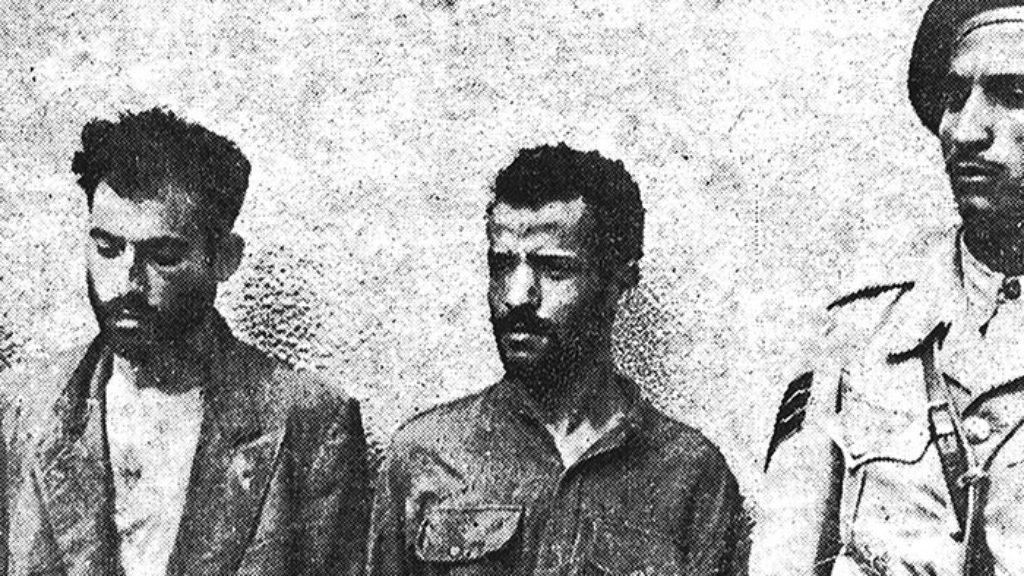
Our Man in Beirut
The Arab Section, suggests Matti Friedman, in one of his latest book's nicer lines, “needed men idealistic enough to risk their lives for free, but deceitful enough to make good spies.”
Purity and Obscurity
When contemporary Jews of priestly lineage avoid cemeteries, when ordinary Jews wash their hands before eating, or immerse themselves in ritual baths, they are acting according to the dictates of an ancient system.
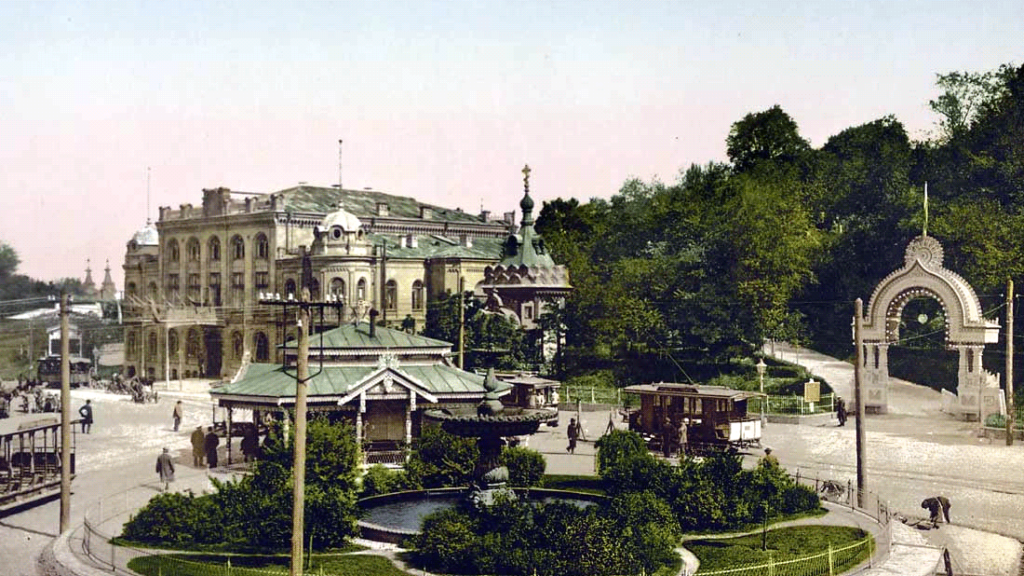
The Old Country, Twice Removed
My grandfather had a way of mentioning the Kiev guberniya (province) that made it sound to me, when I was a boy, like it was our place in the Old Country—and more than half a century later, it still does.
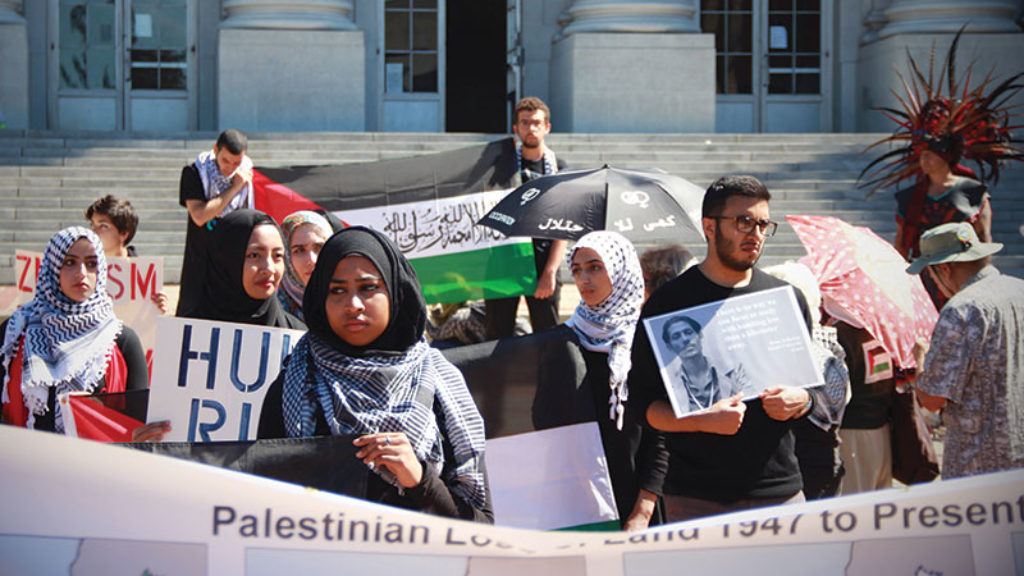
In My Country There Is Problem
Through this new book we get a disturbing picture of how students and faculty in the self-proclaimed progressive movement have demonized and marginalized Israel, its advocates, and anyone who wishes to genuinely learn about the Jewish State.
maieutic
Having read the review--I have not read the Idel book--where does Yiddish Hasidic and secular Yidishkayt and its literature--the most widely read secular literature in Jewish history (as Harshav notes)--fit in here?
I cannot imagine that Idel does not dwell on Yiddish given the subject.
Not a criticism just a question.